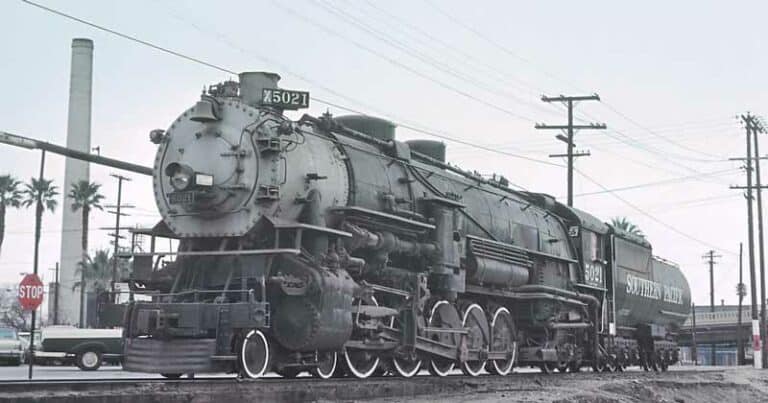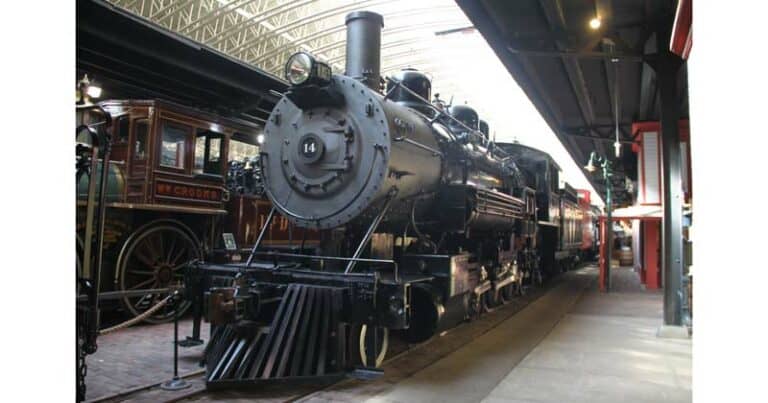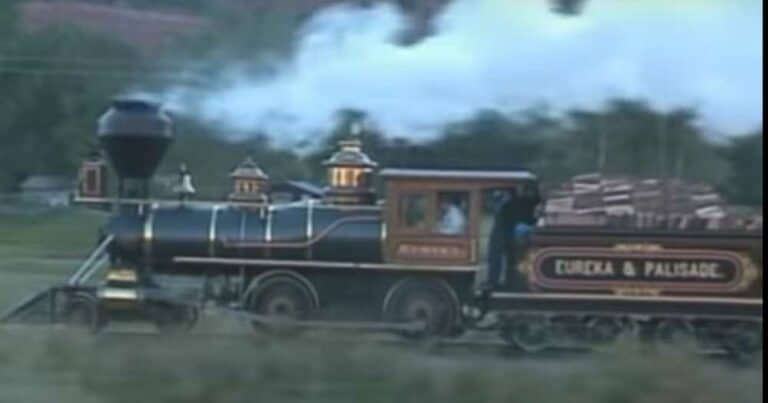The Mississippi, Working both sides of the Civil War
The first half of the 19th century saw the foundations of railroading take shape in America. Predecessors of the big locomotive builders like Baldwin and Alco were opening their doors, and in later years consolidating. But in those first years a significant number of locomotives and locomotive parts were imported from Britain.
Only a few of these very early locomotives survive today, one is “The Mississippi”. It turns out she had quite a career before turning into a museum piece (for more than one museum) for the world to enjoy.

The First Locomotive in the South?
Although details surrounding the Mississippi’s origin are somewhat hazy, the general consensus is that the locomotive was manufactured by Brathwaite and Milner in England. It was then shipped in pieces to America and assembled by Dunham and Company of New York City, probably between 1834 and 1836.
The locomotive is an 0-4-0 wheel arrangement with a four wheel tender. The Mississippi weighs almost 20,000 pounds – without her tender. Once assembled, the locomotive traveled south to begin service on the Natchez & Hamburg Railroad.
Natchez was a key port on the Mississippi River and a large source of traffic for the railroad. Beginning operations in April 1837, the Mississippi is likely the first locomotive in the state. Another answer lost to history: Is the locomotive named after the State, or the River? It was based in the state of Mississippi, but served the port of Natchez, on the Mississippi River.
After a few years, financial issues led the railroad to sell the locomotive to another railroad where she transport cotton. Another sale, and eventually the Mississippi would settle at the Grand Gulf & Port Gibson Railroad.
Mississippi works for the Rebels & the Union
When the American Civil War began in 1861, military leaders on both sides understood the importance of the developing railway system to transport personnel and supplies. During the early stages of the war, the Mississippi was used by the Confederate Army.
During the Siege of Vicksburg in 1863, the steam locomotive was captured by Union forces. Instead of being destroyed or idled, Northern forces realized what a prize they had and put the Mississippi to work for the Union until the war ended in 1865.
Post-War Career
Following the Civil War, the locomotive returned to civilian service. But not for long, she derailed in the mid 1870s in an unfortunate spot, and after sinking deep into Mississippi mud, the Mississippi was abandoned by the railroad. The locomotive would be purchased by James Hoskins in 1880.
After going through an intense cleaning and restoration, the Mississippi steamed again and was able to stay on the tracks. Hoskins would eventually sell his small operation to the Illinois Central Railroad in 1891. The Mississippi would work for yet another railroad.

Exhibitions and Museum Preservation in Retirement
Nearly sixty years after her first run, the Illinois Central selected the Mississippi to go on exhibit at the 1893 Columbian Exposition in Chicago. Following the exposition, the locomotive was stored in the “Art Palace” of the Columbian Exposition; that building would go on to become the Museum of Science and Industry.
In preparation for the 1933 World’s Fair in Chicago, the Illinois Central gave the Mississippi a cosmetic update. The locomotive would then appear in the aptly named “A Century of Progress” exhibit during the event.
Following that World’s Fair, the Illinois Central would donate the Mississippi to the Museum of Science and Industry, where the locomotive would go on display from 1938-2015.

Auctioned for a New Home
In October 2015, the Museum of Science and Industry put the steamer up for auction. The well maintained locomotive had no problems selling. In fact the Mississippi fetched a whopping $220,000. She would now be headed back south.
Before the Mississippi could trailblaze in the South, Tom Thumb set the stage in the North as the first locomotive to operate on B&O tracks.
The locomotive is now part of the roster of the Three Rivers Rambler, an excursion line located in Knoxville, Tennessee. The announced plan was to restore the historic steamer, but there have been no updates by the 3RR company. And, as of early 2022 the railroad has closed down with no concrete future operating plans – check their website to see if that has changed.
Could the Mississippi be ‘stuck in the mud’ again? We’ve reached out to the 3RR to enquire about the status of this historic locomotive. When we hear back, we ‘ll update this article.







